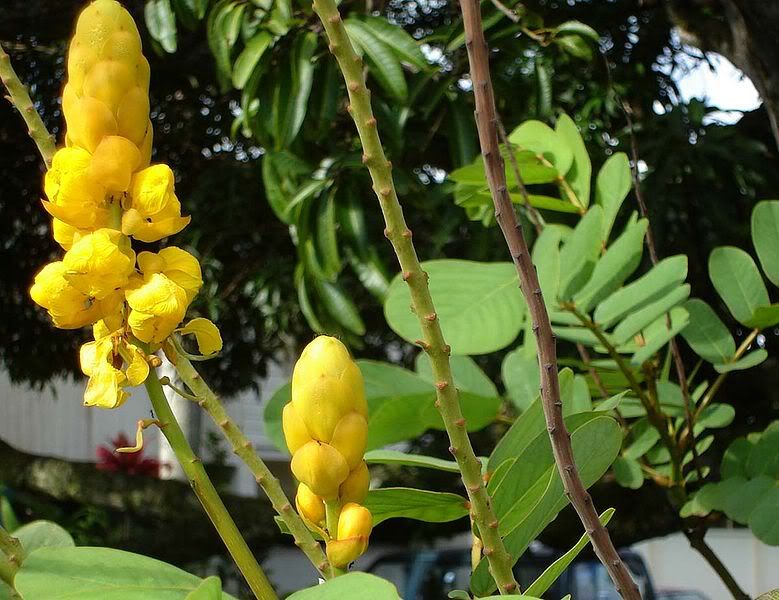
Properties
• Saponin acts as a laxative and expels intestinal parasites.
• Its fungicide property derives from chrysophanic acid.
• Plant considered alterative, abortifacient, aperient, purgative, sudorific, hydragogue, diuretic, vermifuge.
Parts utilized Leaves, seeds, and flowers.
Uses: The seeds used for intestinal parasitism.
- Tincture from leaves reported to be purgative.
- Decoction of leaves and flowers for cough and as expectorant in bronchitis and asthma. Also used as astringent.
- Crushed leaves and juice extract used for ringworm, scabies, eczema, tinea infections, itches, insect bites, herpes. In Africa, the boiled leaves are used for hypertension.
- In South American, used for skin diseases, stomach problems, fever, asthma, snake bites and venereal disease.
- In Thailand, leaves are boiled and drunk to hasten delivery. - As laxative, boil 10-15 dried leaves in water, taken in the morning and bedtime.
- For wound treatment, leaves are boiled and simmered to one-third volume, then applied to affected areas twice daily.
- In India, plant used as cure for poisonous bites and for venereal eruptions. - In Nigeria locally used for treatment of ringworm and parasitic skin diseases.
- In the Antilles, Reunion, and Indo-China, plant is used as hydrogogue, sudorific, and diuretic. - Decoction of roots used for tympanites.
- Wood used as alterative.
- Sap of leaves used as antiherpetic.
- Leaf tincture or extract used as purgative.
- Juice of leaves mixed with lime-juice for ringworm.
- Leaves taken internally to relieve constipation.
- Strong decoction of leaves and flowers used as wash for eczema. - Infusion of leaves and flowers used for asthma and bronchitis.
- Strong decoction of leaves used as abortifacient.
- Seeds used as vermifuge.
No comments:
Post a Comment